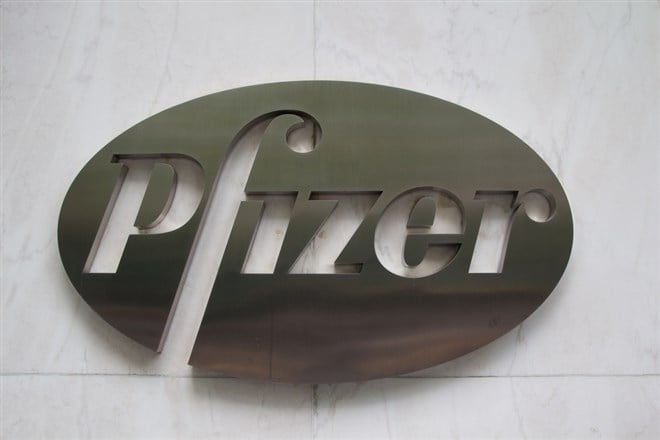
At least 20 analysts offering a 12-month price forecast for Pfizer Inc (NASDAQ: PFE) stock have devised a median price target of $55.00. This sits slightly towards the bottom of the range estimate, with a low of 49 and a high of 75. That said, this median estimate represents a positive change of 6.3 percent from the last price, which was $51.74.
While the analyst consensus for PFE is HOLD, this is only a small majority. In fact, about 40 percent of analysts might argue it could be time to BUY. Still, the general HOLD rating remains consistent among analyst consensuses for the past few months. So it appears the time may be right to pick up this stock; and if not now then, perhaps, soon.
Regardless of sentiment, the consensus does agree that PFE stock is overweight.
An Encouraging Financial Report To Come
Even though Pfizer will not be releasing their quarter report until the end of the month, things are looking pretty good for PFE stock. For one, PFE has received a “high” Earnings Quality Ranking (EQR), from the NASDAQ index, for the 61st consecutive week. Effectively, this means that analysts have long believed PFE will carry persistent earnings and, more importantly, that this trend will continue.
Indeed, Earnings Per Share (EPS) $1.74 on sales of $25.3 billion, which may not seem like much but EPS growth has been excellent for the past few quarters. Specifically, EPS has beat expectations for the past year or more. And, again, analysts appear to believe the trend will continue.
A Steady EPS Beat Trend
PFE shares have fluctuated a bit over the last year, but growth has been quite stable. The 52-week range for Pfizer stock, for example, is $39.86 to $61.71 with a P/E ratio of 11.9.
More importantly, though, the quarterly range for Q2 2021 EPS was only $0.78 and $1.12. The consensus estimate was the near median $0.97. However, reported earnings came in at the top of the range, $1.07, exceeding analyst expectations by nearly 22 percent.
Third quarter 2021 EPS performed even better, with a range of $0.93 and $1.38 and another near-median consensus estimate of $1.08. Reported earnings, though, nearly exploded expectations, coming at $1.34—right at the top of the range—generously exceeding expectations by about 54 percent.
Then again, in Q4 of 2021 Pfizer's reported earnings beat expectations, this time by 35 percent, at $1.08. The consensus estimate was $0.87, again at the center of the $0.79 and $0.99 range.
First quarter of 2022 was a bit of a wild card. For one, the EPS range was the far wider than previous quarters, at $0.1 to $2.36, with a consensus estimate of $1.49. However, the reported earnings of $1.62 beat expectations by nearly 93 percent!
In all, this represents quarterly growth of 7.24 percent despite a quarterly average sales loss of -1.31 percent; and annual growth of 49.59 percent against annual sales growth of more than 26 percent.
Pfizer: A Quick History
Pfizer was originally founded in 1849 by two recently-arrived German immigrants. Charles Pfizer and Charles Erhart were both in their mid-20s when they began this venture.
While it was originally a fine chemicals business based out of a Brooklyn factory Pfizer now develops, manufactures, and sells medicine, vaccines, and other healthcare products. Their primary focus is inflammation & immunology, internal medicine, oncology, rare diseases, and vaccines.
Their first product was a more palatable anti-parasitic medicine designed to taste like toffee. This brought together Pfizer's experience as a chemist and Erhart's skills in confectionary. The drug was a big success, establishing a path for what has become one of the biggest drug companies in the world.
This success survived several war efforts. In 1862, for example, when the civil war broke out in America, antiseptics and painkillers were suddenly in high demand. Within the next five years or so, Pfizer had already doubled their pre-war revenues; and they expanded their product line.
Following the war, Pfizer continued to focus on building not only their burgeoning drug business but also industrial chemicals. For one, they produced the citric acid used in the emerging soft drinks industry. For many years after, citric aci was their mainstay product.
The company continued to explore other food-related additives and drugs for the next several decades until they made a notable transition to antibiotics. Thus began Pfizer's modern era, as the pharmaceutical company we know today.